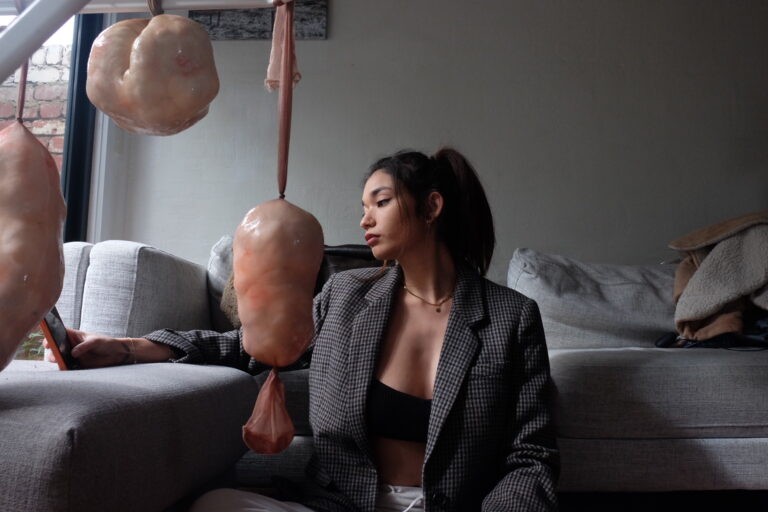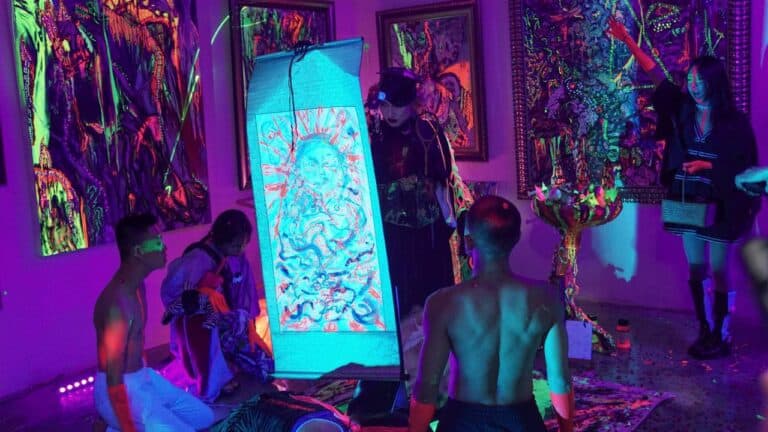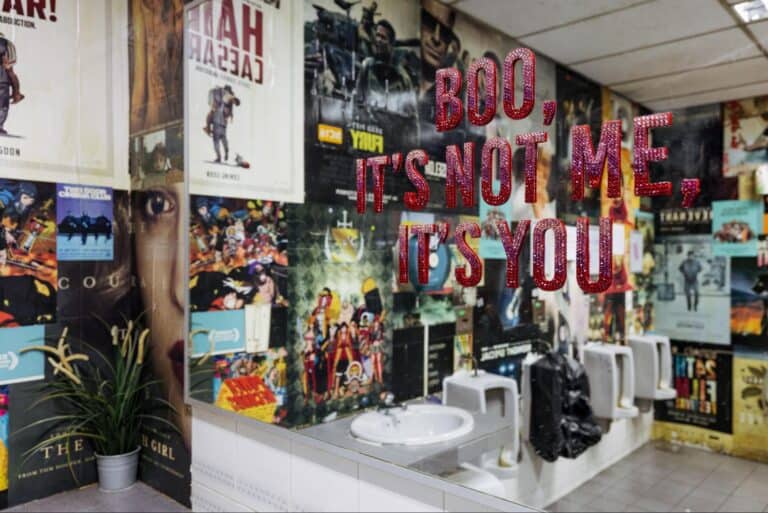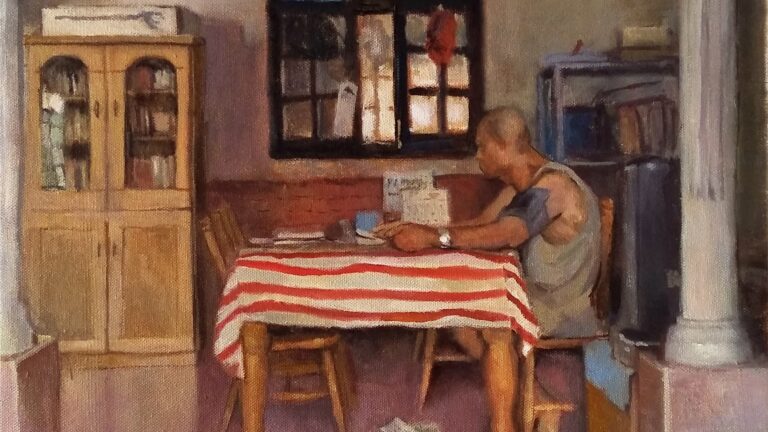Rachel Ma is the founder, stamp artist and illustrator behind local rubber stamp art practice Drool Stamps. Her works are distinctively whimsical, blending a cute aesthetic with sensitive attention to details and patterns.
Her chosen subject matter ranges from animals and inanimate objects with delightful smiling faces, to culturally recognisable food packaging that would excite anyone with a sweet tooth.
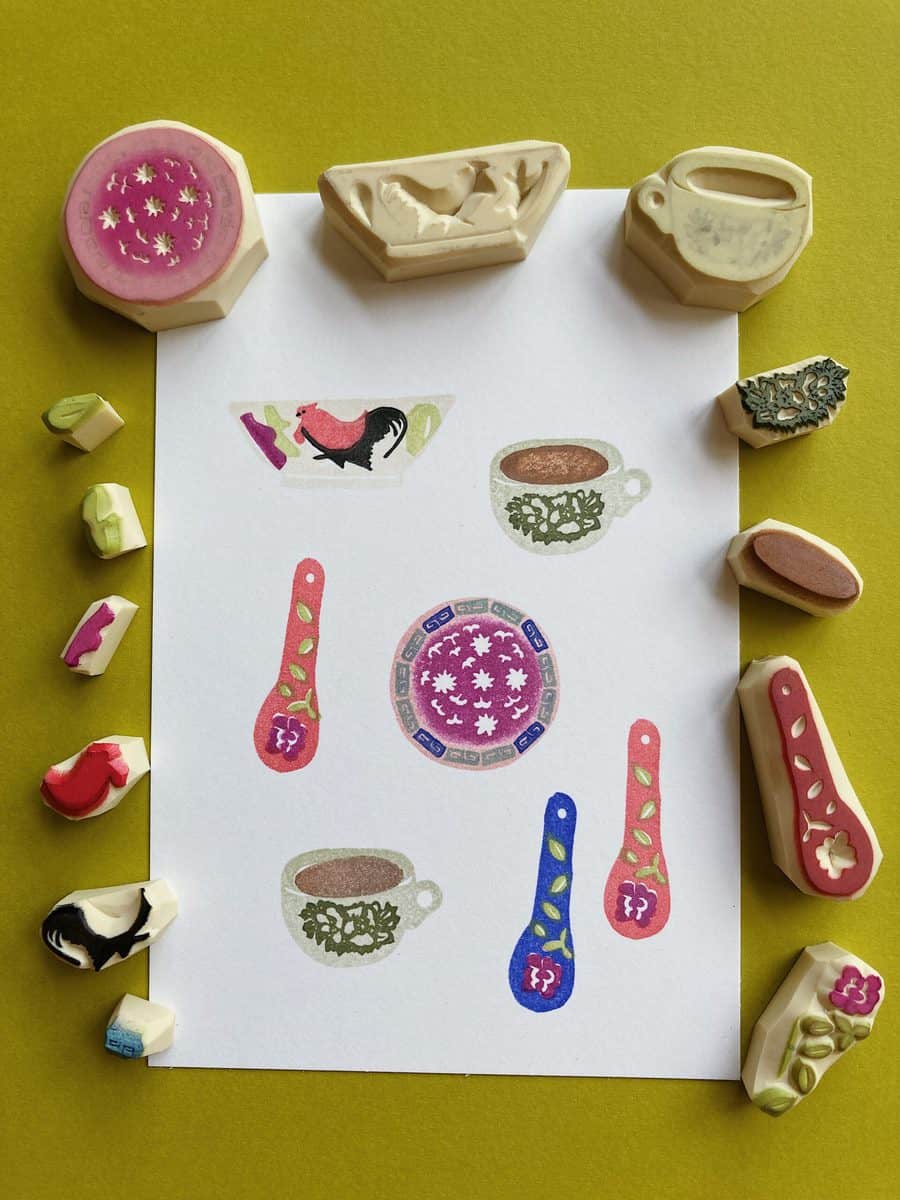
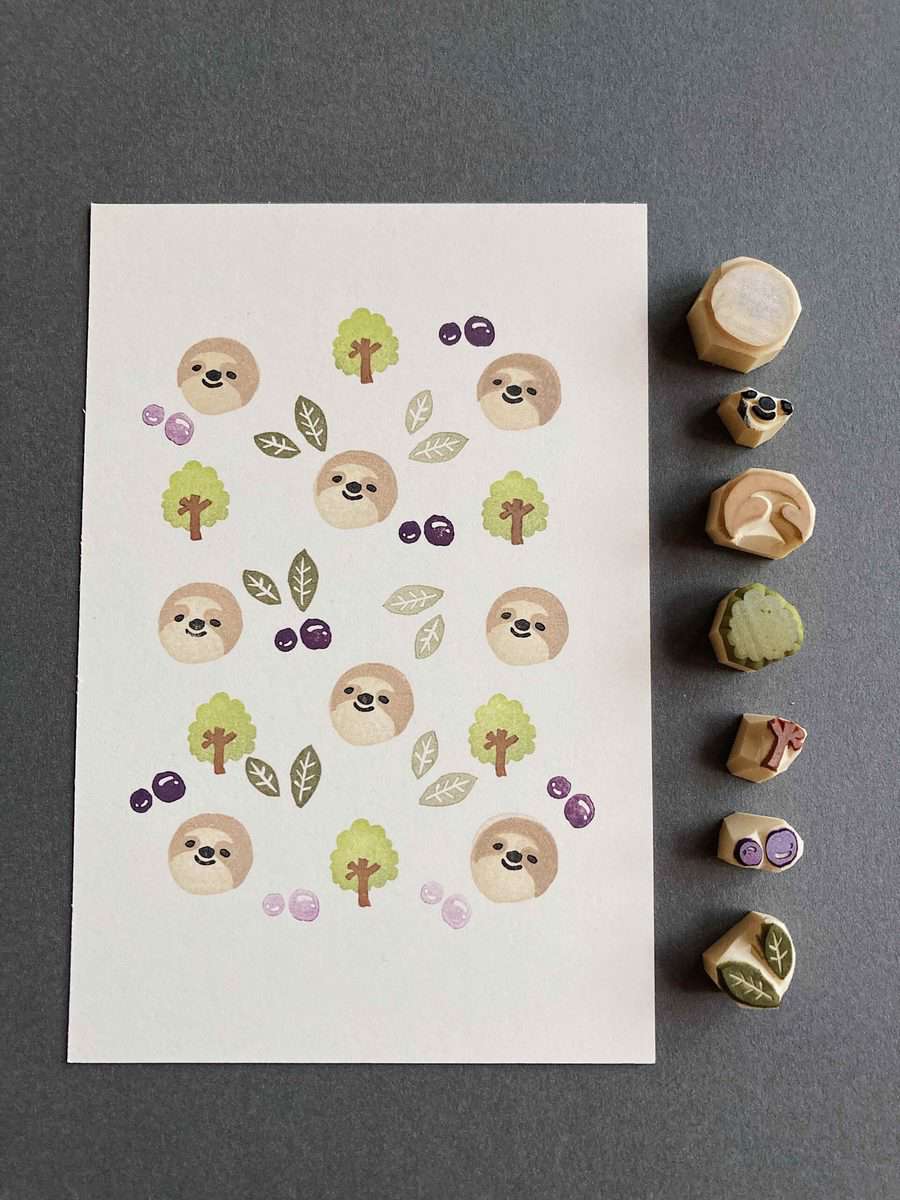
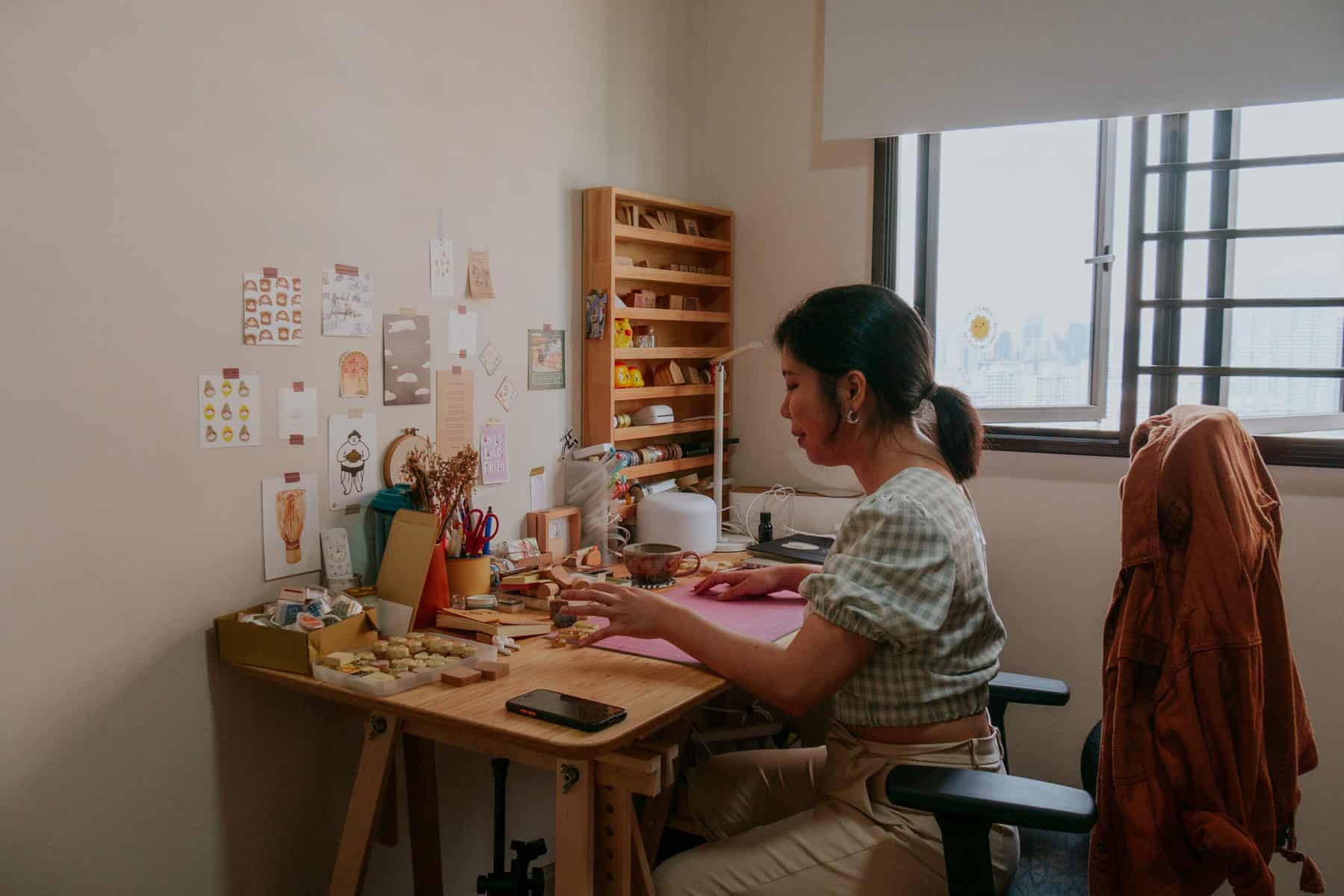
In her studio, she stores surprisingly basic equipment — simple illustration tools, blocks of rubber manufactured in Japan, sharp pen knives and carving implements, and a wide range of ink pads in different pastel hues. Each stamp artwork starts as sketches in a quotidian Muji notebook. It’s then transferred onto a block of rubber and carved out with a sharp tool. More complicated illustrations are the composite of a few stamps used in succession.
In recent years, Rachel’s gained a large audience of followers on Instagram, many of whom are also creative makers and illustrators. Through a monthly offering of prints on Patreon, she’s built a community of people who look forward to her newest and latest works. An ever-changing roster of themes — houseplants one month and local birds the next — allows Rachel to exercise freedom in the creative direction of her work.
Off the heels of her recent exhibition 24 Seasons at Haji Lane, we chat about her journey with the niche art of stamp carving, how she creates space for an independent art practice, and her motivations in pushing the artistic boundaries of her medium.
How did your rubber stamp carving journey start?
I started 14 years ago when I came across a Malaysian crafter’s blog. I remember that she had shared some photos and a very simple tutorial on stamping. It was then that I started to make my own rubber stamps because the materials were super accessible — just a block of rubber and a knife, which I already had on my desk!
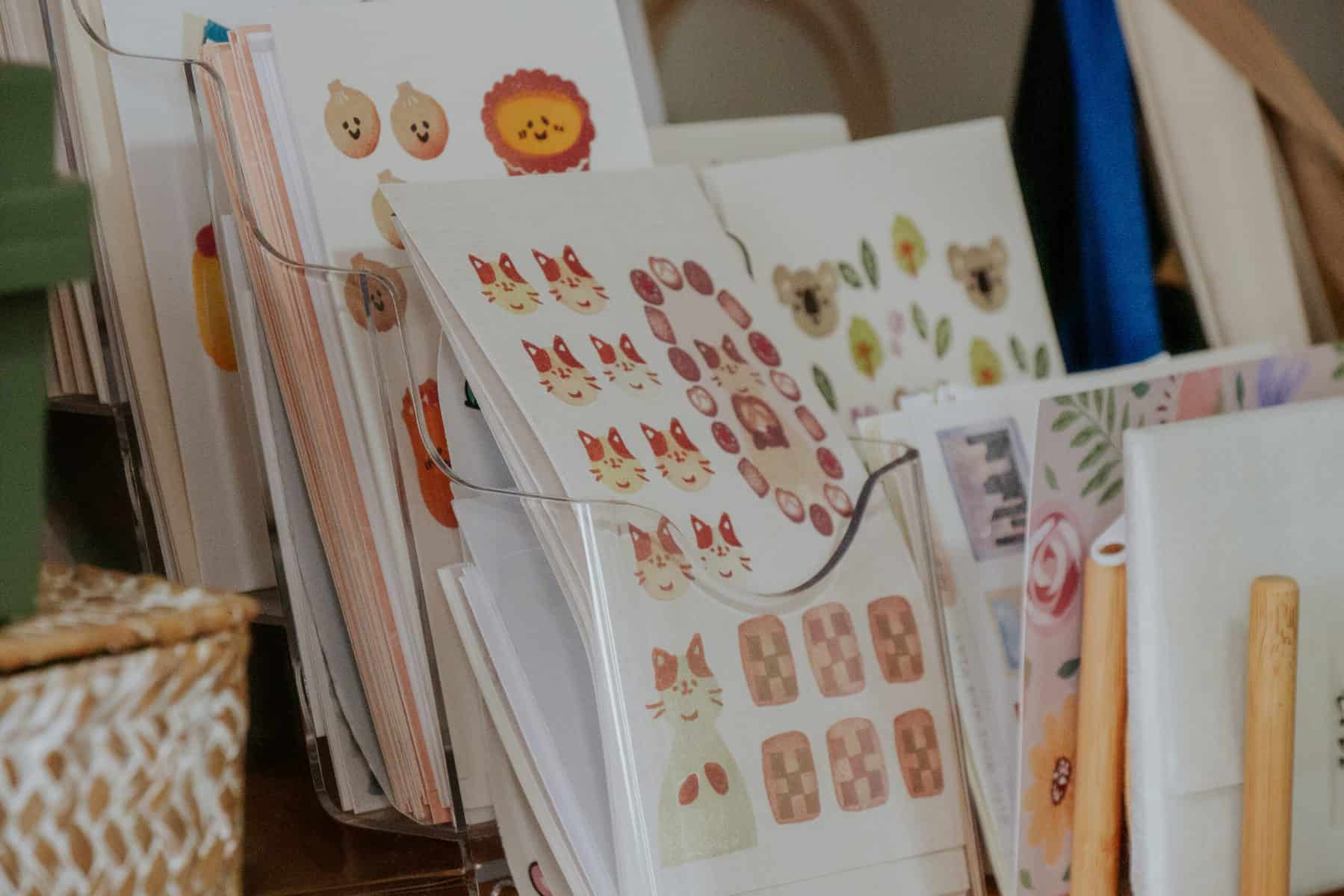
What has sustained your interest in rubber stamp carving all these years?
Honestly, I’m quite amazed at how stamp carving has stuck with me for so many years. I guess it’s because I really believe in the medium’s potential and how I can continue to create new things and gain mastery (in my practice).
I’m always trying to push the boundaries of the medium and refine my craft in different ways. Firstly, by improving the smoothness of the carving techniques themselves. Then, by introducing colours into (the work), as there are different ways for me to layer the stamps and create depth. Finally, I also think of different ways to compose the images.
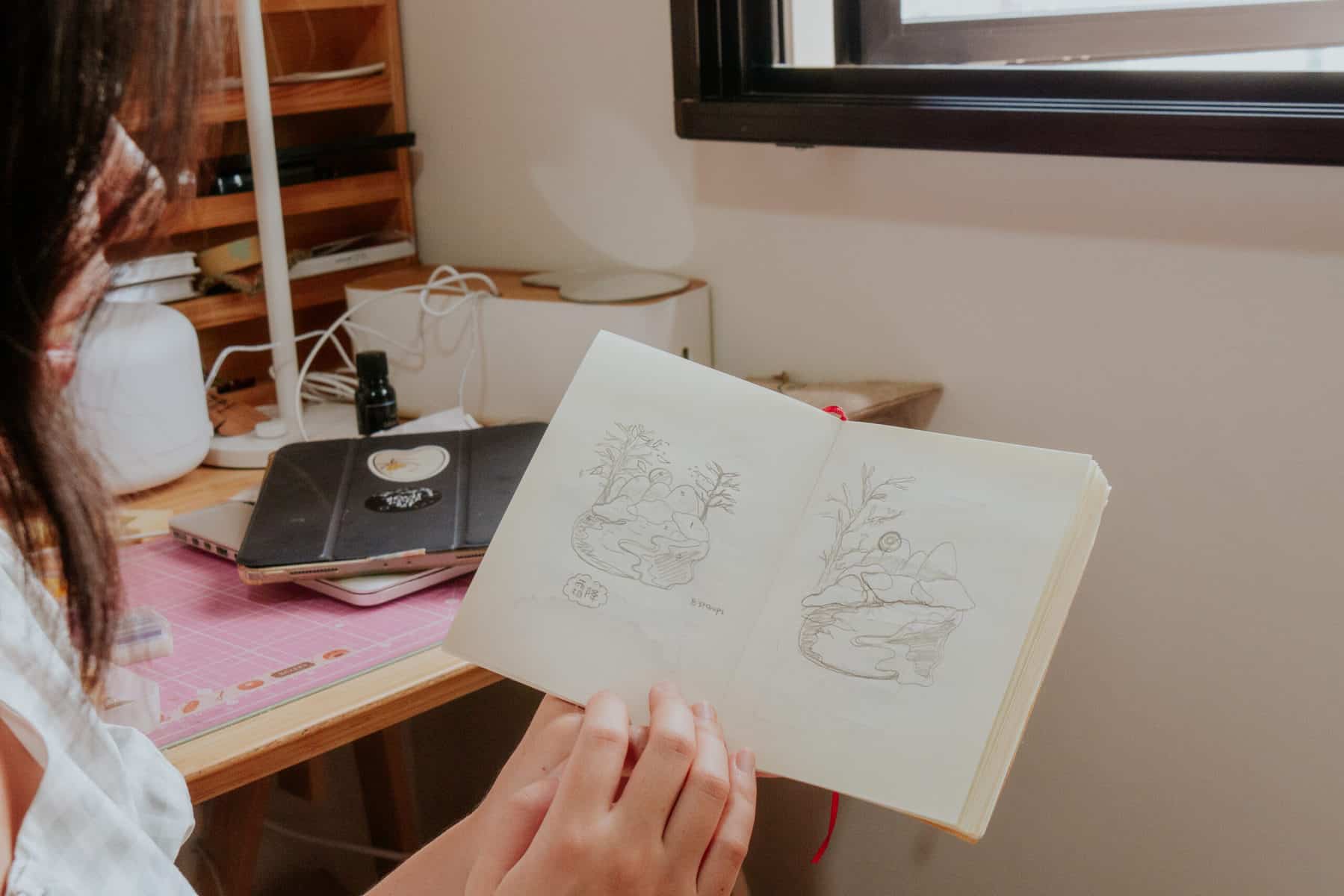
Do you often look back at your earliest works?
Not often, but when I do, I often think about my younger self: “Oh, she was so creative!”
I had so many fun ideas back then and I think there’s a part of myself that doesn’t think that way anymore. It’s like that reservoir of ideas might not come so naturally now, or rather, I have a different perspective on life and approach my work differently. I have brought some of those ideas — like printing on different materials such as fabrics — to fruition, but there are also other ideas that have just stayed as experiments.
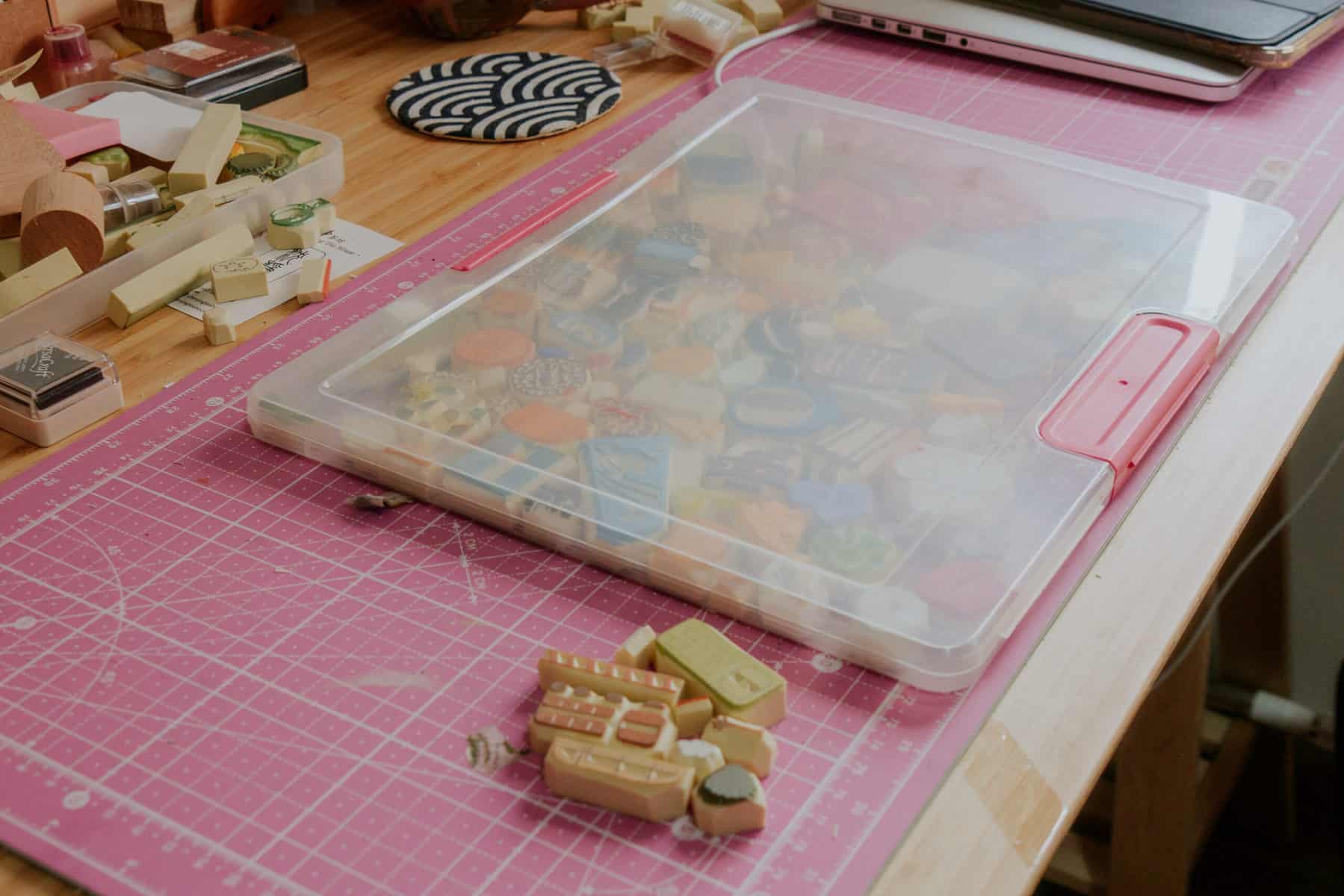
Has the way in which you share your work changed over the years?
Definitely! A while back, there was a newly opened ice cream shop that I walked past. When I looked into the shop, the person looked out at me and we made eye contact. And I’m just so familiar with that gaze — you know, the ‘do you want to come in’ type of eyes? When I first started, I remember having that same eagerness to share my ideas and invite others to take a closer look at my work.
I felt much more fragile then, because what if people didn’t appreciate it? But over time, I’ve just been through a lot more seasons of my life, and now I’m at a stage where if people are interested, they can come in. Even if they choose to ‘pass on by,’ I don’t take it personally.
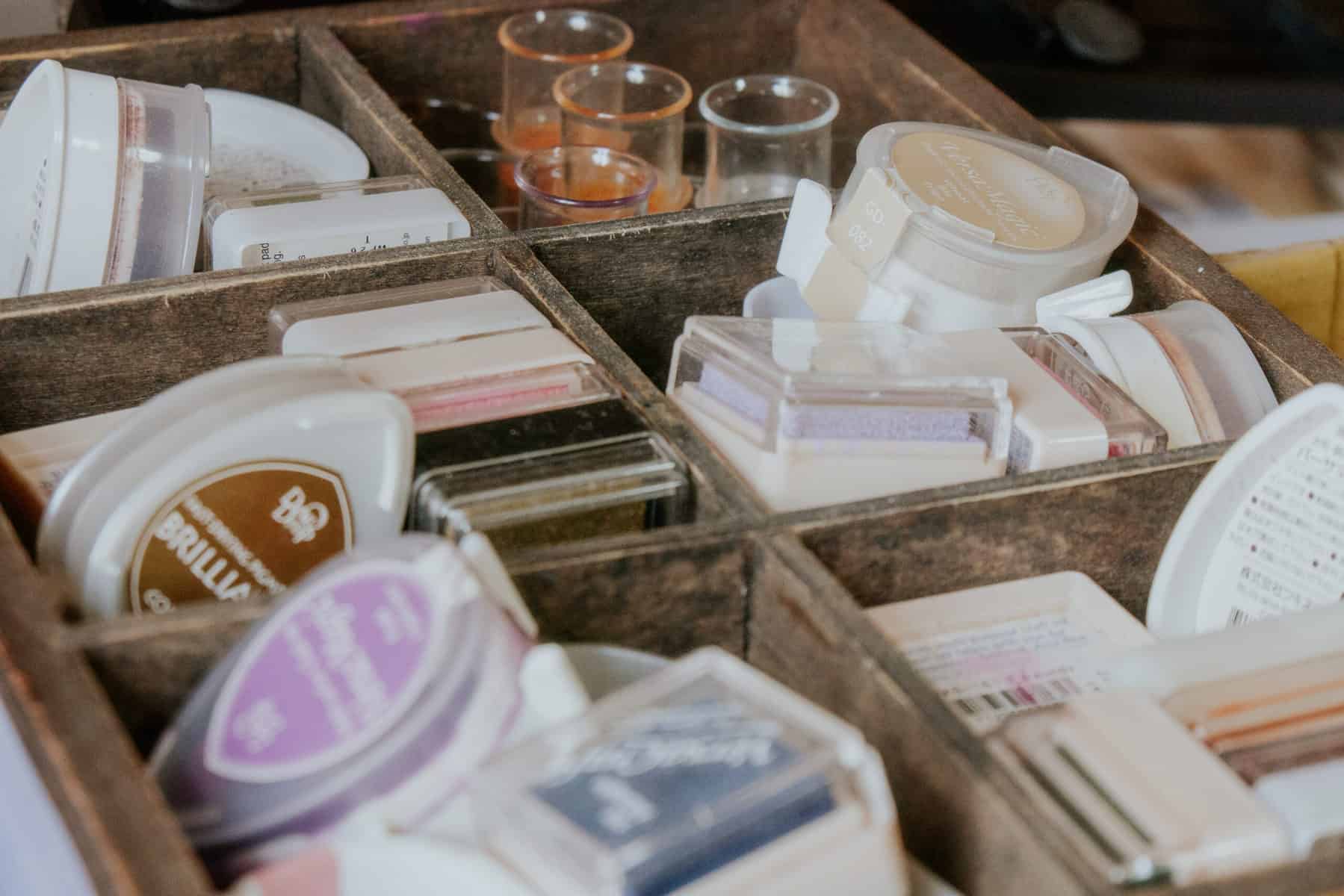
How has interest in your work changed?
At first, people were more interested in the technique of stamp carving because it was so unique. But I noticed that as my craft became more refined, the appreciation that people had also changed to focus more on the artistry of the work. People who have been following my work for a long time tend to appreciate how my work has evolved and grown. For new people, my work is unlike what they might understand about stamps and what can be created with them.
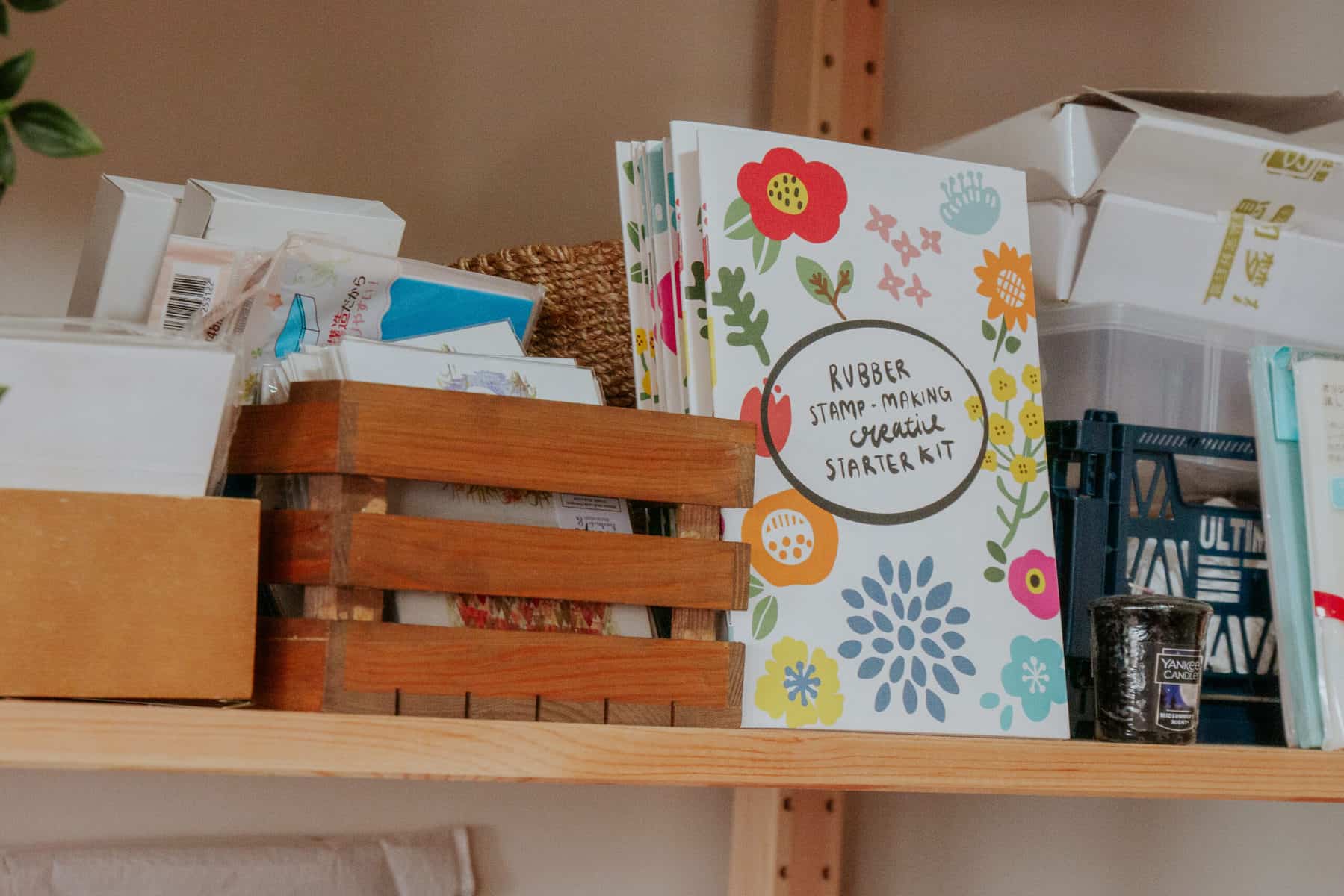
In your view, what do people typically think of when they think about stamps?
I assume that people think that stamps are just functional. Let’s say, like the stamps that teachers use to stamp on worksheets. Or perhaps like the self-inking stamps that are sold in printing shops and come in red, blue, or black.
Another audience might think that it’s more for kids, as they remember stamping with fruit, vegetables, or sponges when they were in school. It’s not that I don’t want my work to be associated with kids’ play, but I see my work as not just being for kids.
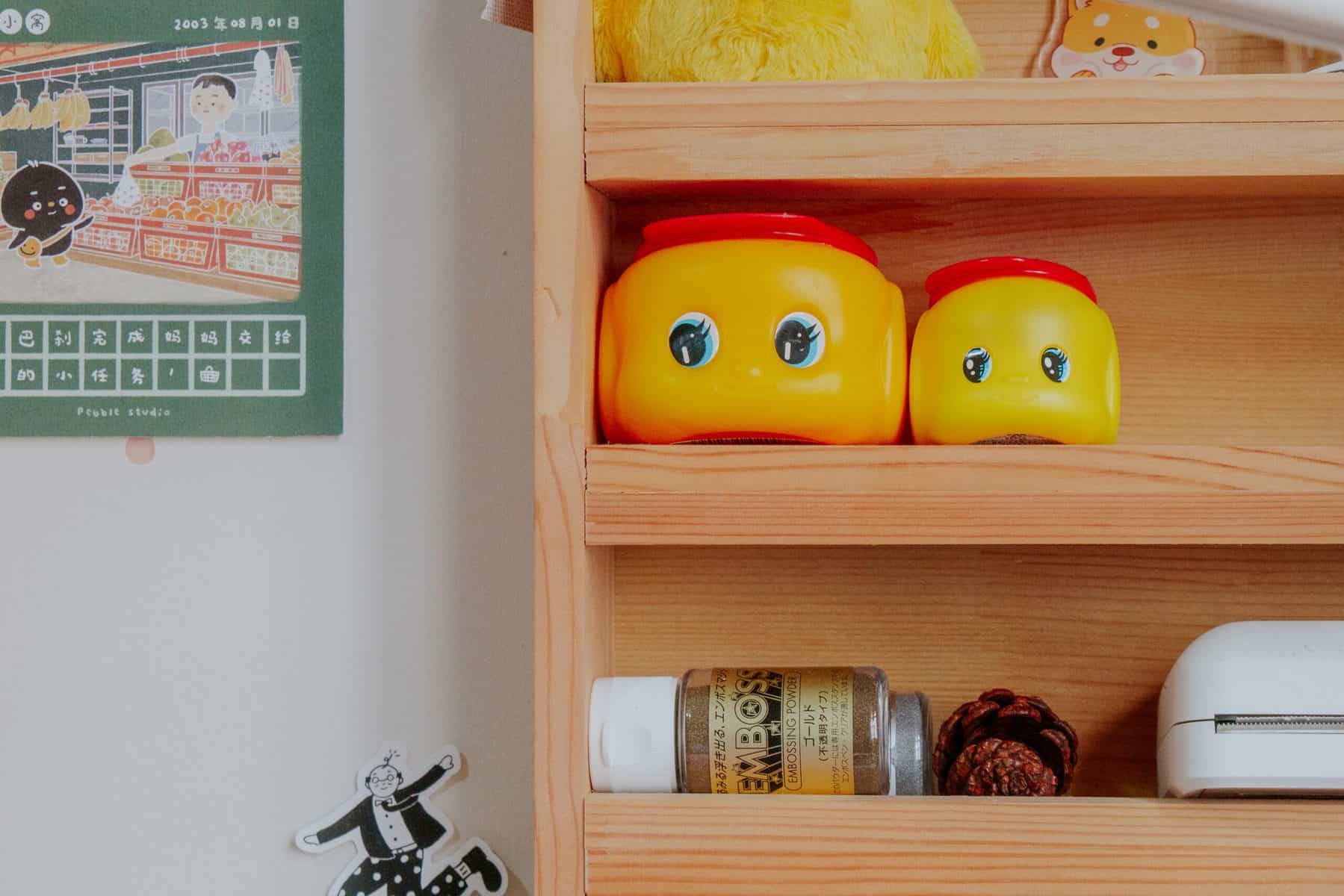
For the Esplanade’s Huayi 2022 festival, you spoke to Mr Lee Boon Chye, a veteran seal carver, about your respective crafts. How has that experience influenced your work?
Technique-wise, we are very different, since he carves in stone and I do so in rubber. And because of the generation gap, the philosophy toward our craft differs. He’s from a generation where they do things for survival and livelihood.
While I also do it for my (full-time) livelihood, Mr Lee’s generation was less concerned about passion and more about carrying on a traditional craft.
I admire his sense of pride and ownership, like “I own this, and I have to bring it down to every generation.”That is very admirable and different from my generation. There’s no one better point of view, just different approaches to life.
I also asked him about what keeps him going. And he told me that he’s been doing (seal carving) his whole life, so why not finish the race? Nowadays, we often celebrate people who succeed early in life, but here’s someone who is running such a long race.
Sometimes I look back at the past, when I didn’t manage to do what I set out to, and I feel like I have failed. I grieve over those years and wish it could have been different. But then, I remember how Mr Lee continued to master his craft over the years where he was doing very mundane things, with (only a small) audience and diligently holding on to this legacy. It was his mindset, not his technique, that was more impactful and inspiring for me.
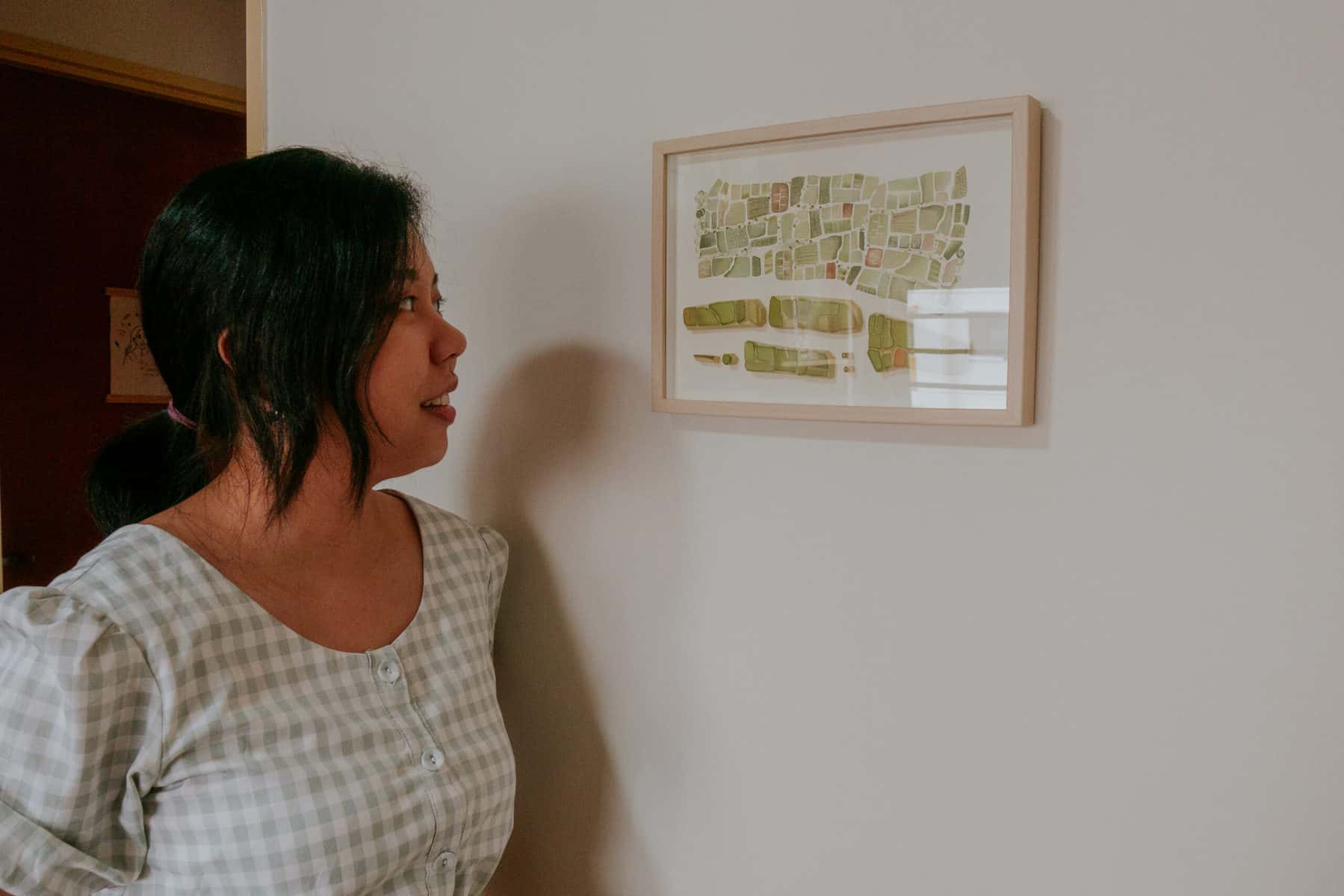
I noticed that in your latest series, you have also started exhibiting the stamps alongside the finished prints. Can you tell me more about that?
The stamps are the practical tools to create the prints, but I wanted to present them as artworks. When people hear about me wanting to push the boundaries of stamping as an art form, they think of me making larger works. But it’s not about expanding the scale (like making a mural or anything!) — my intention is to refine and elevate the craft.
I think we are overstimulated by all the images we can see, and we often don’t slow down and think about how they are made. Exhibiting the stamps alongside the prints encourages viewers to slow down as they appreciate the image, and makes the whole image more meaningful to the viewer.
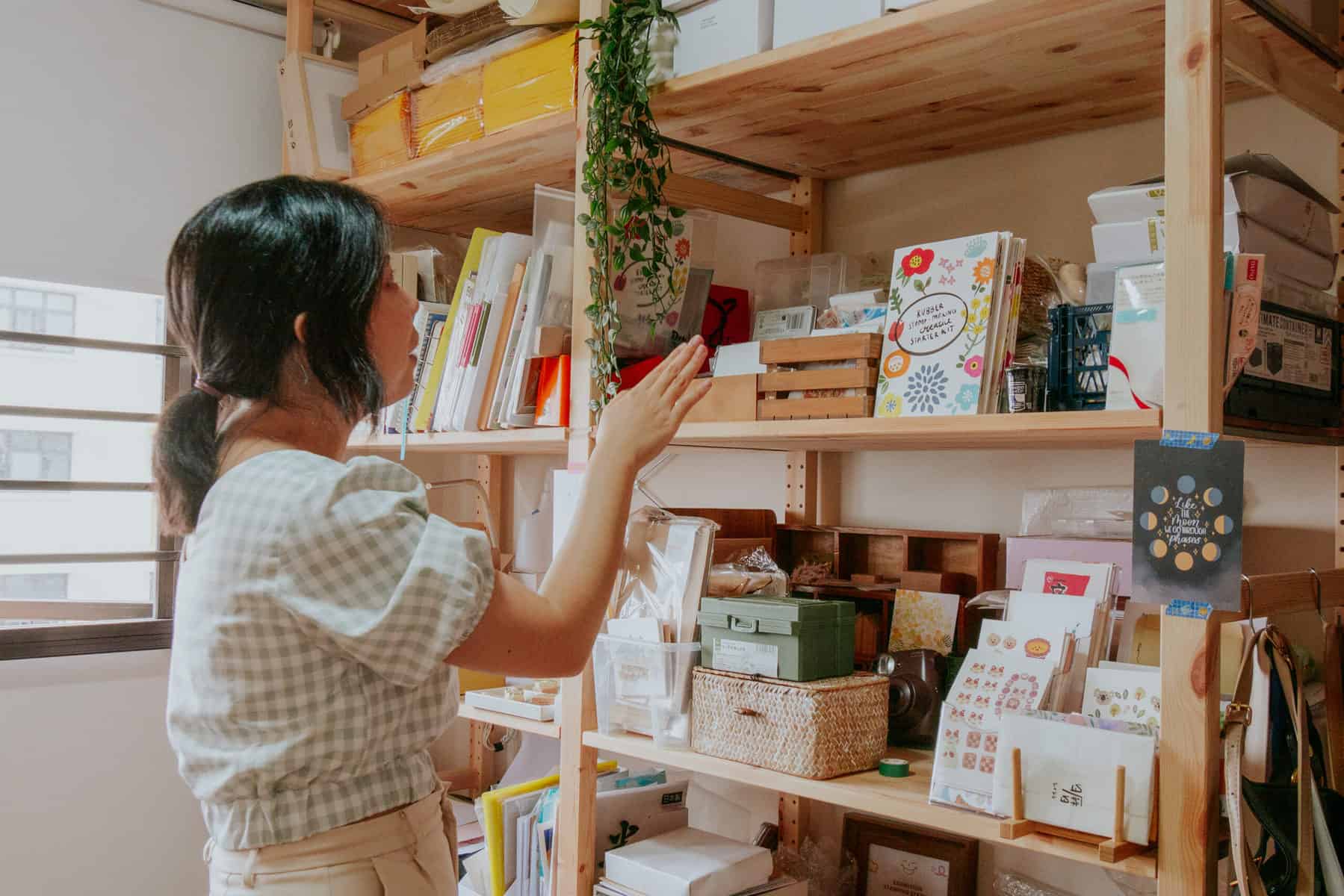
I know that you previously worked from your bedroom, and now you have moved into your own home studio. What does your studio space represent to you?
That really depends on my inner seasons. How I interact with the space depends on what is going on internally. Sometimes when I’m not feeling my most creative, I would rather go into the living room or the couch and remove myself from the pressures of making. And when I am more relaxed and more gentle towards myself, I will go in and work. I do have to reconcile myself with the idea that I don’t always have to be super productive. So the purpose of the space does change.
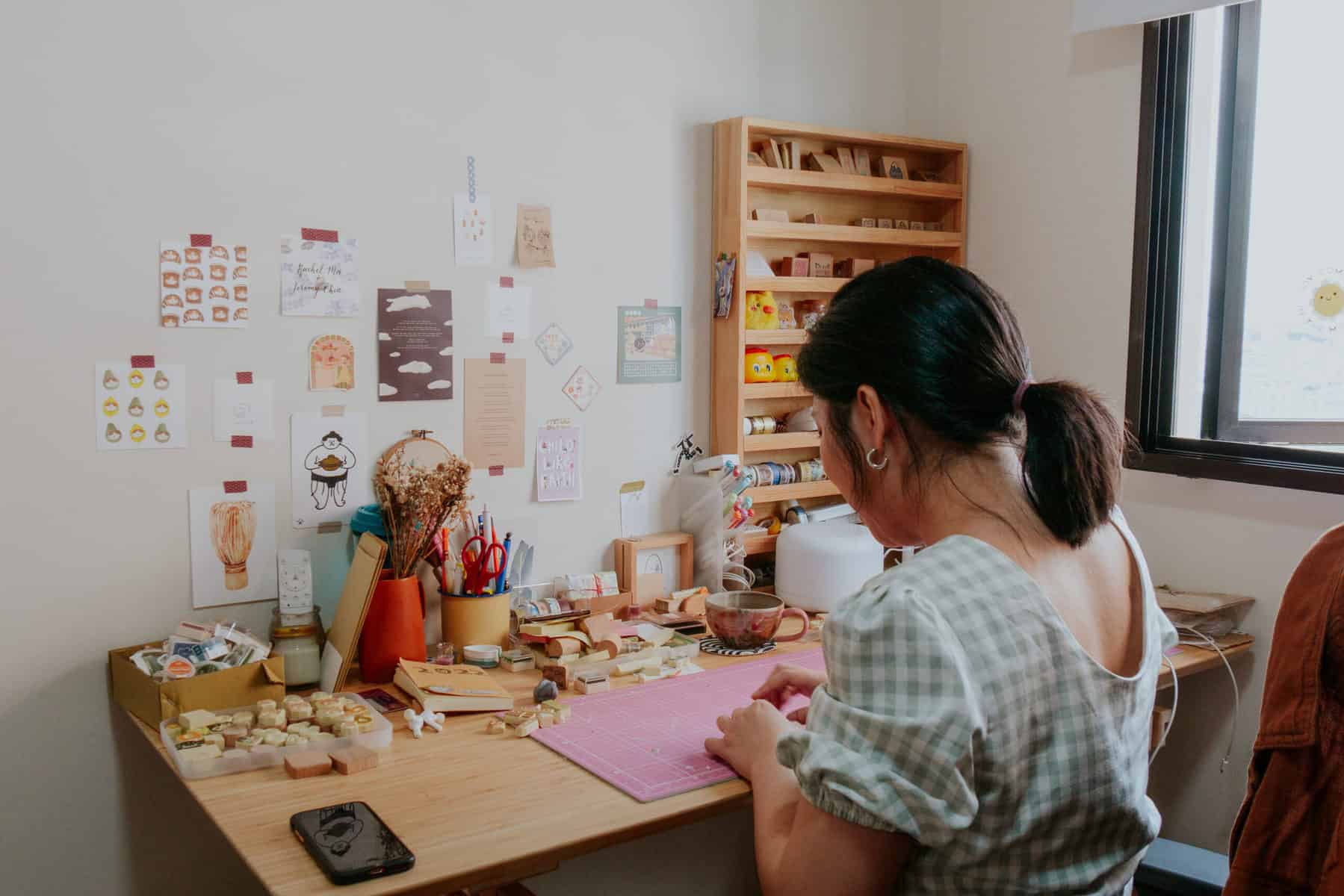
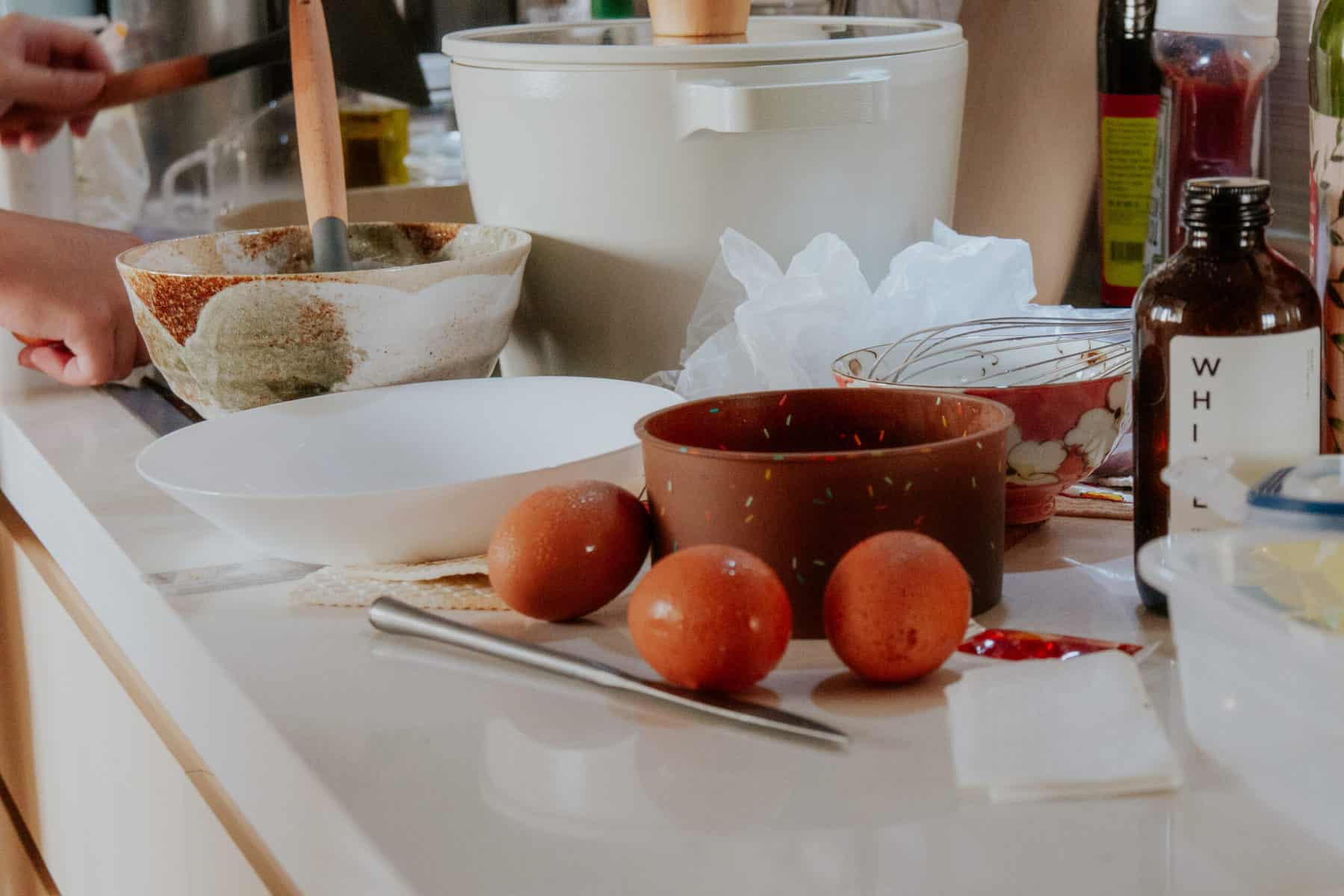
What are some other routines that help you to create work?
I was listening to a podcast where the host talked about the difference between a “maker schedule” and a “manager schedule.” A “manager schedule” is where you organise your time with meetings and tasks to be done. Sometimes, for makers, we feel that we have to stick to a certain kind of schedule to be productive. But the maker’s process is very different and requires a totally different mindset and approach.
As makers, we need our time and space to further creative ideas and become so fully immersed in our work that we enter a state of flow. We shouldn’t feel guilty about not having something that looks like a “manager schedule.” It’s all about allowing yourself to have that space. So I try to balance the two schedules by allocating certain days where I can just focus and create.
______________________________________
This interview has been condensed and edited for clarity.
Find out more about Rachel’s work here.






